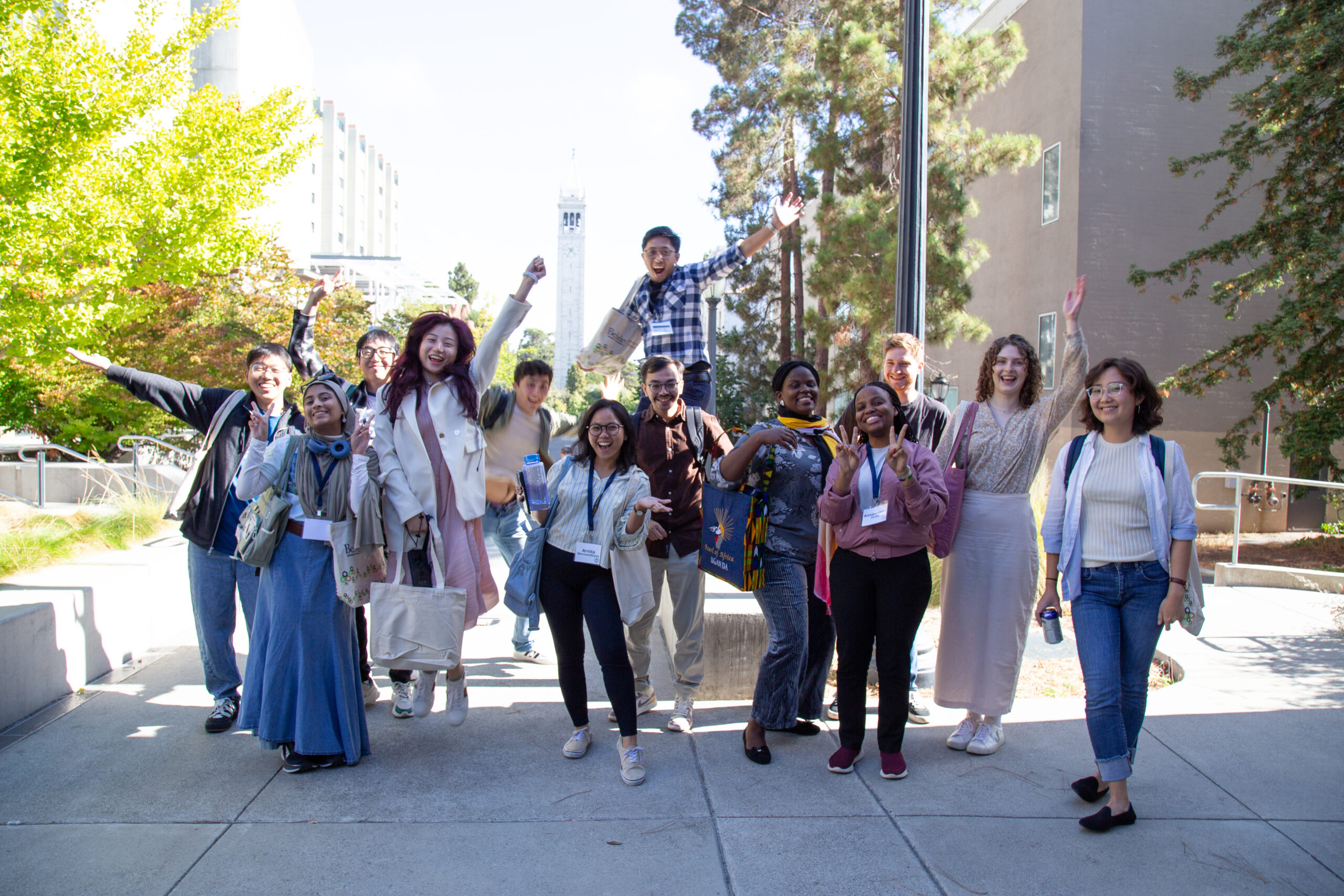There is a quotation on the website of the Children’s Hospital Oakland Research Institute (CHORI) that sums up Dr. Janet King’s ability to combine international nutrition expertise and common-sense thinking. The quote says: “We don’t need new lab research to show us the benefits of fruits and vegetables. We need research that emphasizes real-world solutions.”
King, who serves as executive director of CHORI, is not your typical research scientist. In addition to publishing 225 scientific papers, review articles, and book chapters, she has effectively turned nutrition research into public policy. In the early 2000s, she chaired the U.S. Department of Agriculture/U.S. Health and Human Services Dietary Guidelines Advisory Committee, which resulted in the Dietary Guidelines for Americans 2005. She is a member of the National Academy of Sciences, Institute of Medicine; and in 2007, she was inducted into the USDA Research Hall of Fame. She also has directed the USDA Western Human Nutrition Research Center at the University of California, Davis (1995-2002) and chaired the Department of Nutritional Sciences at University of California, Berkeley (1988-1994).
The Blum Center sat down with Dr. King, a Blum Center advisor, to learn more about the connections between child nutrition and socioeconomic development.
When did child diabetes rates start to spike in the United States?
We began to see a rapid increase in the incidence of obesity in children in the 1980s. However, the association between obesity and Type 2 diabetes didn’t make it into the scientific literature until 20 years later. I can only speculate why this is. It might be because the incidence of obesity in children hadn’t reached the threshold where the association with diabetes was apparent to medical staff. Nonetheless, these days about 45 percent of all cases of diabetes in children are associated with obesity and are type 2 diabetes. Whereas in the 1980s, the only time we saw diabetes in children was when it was type 1. As that time, we would call type 2 diabetes “adult onset diabetes,” because it was so rarely seen in children.
What were the chief reasons for the 1980s rise in child obesity and diabetes in the U.S.?
I think there are many contributors. One is the increase in screen time among children. TVs were certainly available in the 1960s and 1970s, but we didn’t have the access to the computers and videos games that we have today. That has been a huge impact on the lifestyles of children, in that they spend more time in front of the screen than outside being physically active. What we hear in the obesity clinic at Children’s Hospital Oakland is that it’s not safe to play outside. So children come home from school, and many of them have their own video games or TVs in their room, and they spend most of their time playing in front of the screen. Another factor is that that the family structure has changed in the last 35 years. Now it’s almost essential that both parents work outside the home to make enough money to support the family. That means meal structures have changed. The meal together that I think was fairly common in the 1960s and 1970s doesn’t exist as much across all economic groups. I think that’s another problem because it encourages more snacking, especially among children. They come home from school, they’re hungry, and they eat snacks. The snacks are high in sugar and fat and generally high calorie.
What are you learning about the child diabetes worldwide?
I should mention first that there are differences in susceptibility to diabetes linked to ethnicity. Asians are more susceptible to diabetes, as are Latinos, Native Americans, and African Americans. In Mexico, the incidence of diabetes is growing very rapidly both in adults and children. It’s associated with the genetics as well as with lifestyle and diet. But the Mexican government is very proactive in developing and implementing nutrition programs to improve the quality of the diet of lower income people. The government supports subsidy programs providing a special fortified milk for mothers to feed to their children. They also have a tax throughout the country on sugar-sweetened beverages. Berkeley is the only place in the United States where such a tax exists. Well, the whole country of Mexico has a tax on sugar-sweetened beverages.
Vietnam is another country, where I work, where obesity is increasing among children. You’ll be out in the middle of the countryside and find a road-side stand selling sweets, salty snacks, and sugary drinks. Those items are readily available throughout the country. I’m not aware of any programs at this time in Vietnam to reduce the intake of high-sugar, high-fat foods to prevent the development of obesity.
What is clear, however, is that child obesity and diabetes is a global phenomenon. It accounts for what we call the “double burden of malnutrition”: under-nutrition and over-nutrition co-exist in the same household and in the same neighborhoods. It’s really hard to sort out why one child is stunted, thin, and under-nourished, while the next child is overweight, yet also stunted and malnourished.
How are we trying to solve the child diabetes epidemic in the U.S.?
We recognize that part of the problem is that many young mothers today have very little experience in purchasing food, preserving it appropriately, and cooking it. Thus, frozen meals ,ready-made foods, and quick meals from fast-food restaurants are common. Those particular foods tend to be higher in calories and more expensive than preparing good meals at home. I think it is very important to establish programs that teach families how to manage the household with respect to food and to create healthy meal patterns.
Do you think we need to bring back home economics?
We need to bring back something! I know we don’t have home economics in the schools anymore and it’s not a cool thing to be studying, but food management skills are life-enhancing skills. If you don’t know how to manage your money or manage your food supply, it puts you at a real disadvantage.
Do you see potential learning from previous public health campaigns—for example, smoking—that could be used to thwart childhood obesity and diabetes?
The message is easier to understand for smoking than for nutrition. The message with smoking is: Stop. But we can’t tell people to stop eating. What we can do is ask people to change habits. Yet many nutritionists are pessimistic about using that approach, because it’s difficult to get people to change habits. It’s also expensive. It takes a lot of time to provide meaningful, one-on-one counseling. Thus in the United States and in many countries, to implement change more expediently, we’ve increased the availability of foods fortified with vitamins and minerals in the market. Breakfast cereals are a prime example.
Is this less effective?
I think it’s less effective if you’re not providing the nutrition education to go along with the increased availability of fortified foods. If you’re fortifying your breakfast cereals, it’s true you get more of certain nutrients from that breakfast cereal. But there are other micronutrients and health components in our foods that aren’t routinely added as fortificants. We need a variety of foods in our diets. That is an old, well-worn message that doesn’t get the public’s attention any more. .
Was there a highpoint in this country in terms of nutrition?
It’s hard to say. We have always had nutritional problems in the United States, but they have never been as severe as in lower-income countries. For example, we had pellagra, a niacin-deficiency disease, in the southern part of the U.S. This public health problem was the basis for our first major public health nutrition program, fortifying wheat flour with thiamin, riboflavin, niacin, and iron. Since then, the U.S. has always played a leadership role in developing solutions for major nutrition crises around the world. In the mid-20th century, when millions were starving from insufficient food, Norman Borlaug, a biologist and agricultural scientist, developed high-yielding, disease-resistant wheat varieties that are credited with saving billions of lives due to starvation. This was the origin of the “green revolution.”
Our nutritional problem in the U.S. today is more complex, in my opinion, than any other nutritional issue faced in the past. Today, both children and adults are suffering from malnutrition because low-cost, high energy, tasty, but nutrient-poor, foods are readily available. The problem affects the affluent as well as the poor, but it is more common among the poor because these foods are inexpensive. Today, as never before, people have to make a conscious decision to eat healthy because many less-healthy foods are readily available.
If you could broadcast one message about nutrition to caretakers of children what would it be?
Focus on healthy snacks! However, I also think diet quality would be better if we focused on eating regular meals rather than snacking throughout the day. That would enable to the child to learn how to recognize hunger and satiety. Since many of our children snack continuously throughout the day, I’m unsure if they ever learn when they are hungry and need to eat and when they are satisfied and should stop.
Is there enough discussion about the correlation among child diabetes, malnutrition, and poverty? If so, what is productive about the discussion? If not, what thwarts the discussion?
It is a pity that we have hungry children in the United States. Many children in low-income households suffer from food insecurity, which, in turn creates problematic food behaviors, such as hoarding and gorging. The body responds to this irregular pattern of food intake by becoming very efficient at storing calories as fat when food is available. This puts the underfed child living in poverty on the road to obesity and, eventually, diabetes. During the last decade or two, we’ve learned a lot about this double burden of malnutrition. But, we are far from solving the problem. Why? I think this is largely because of the complex, multifactorial nature of the problem. As a nutrition researcher, I talk primarily with other pediatric nutrition investigators. But, we rarely interact with experts in public policy, economics, food science, and agricultural sciences to discuss solutions to the problem. Until leaders from all components of the issue come together with a combined commitment to develop effective solutions, I am pessimistic that we will make much progress.




